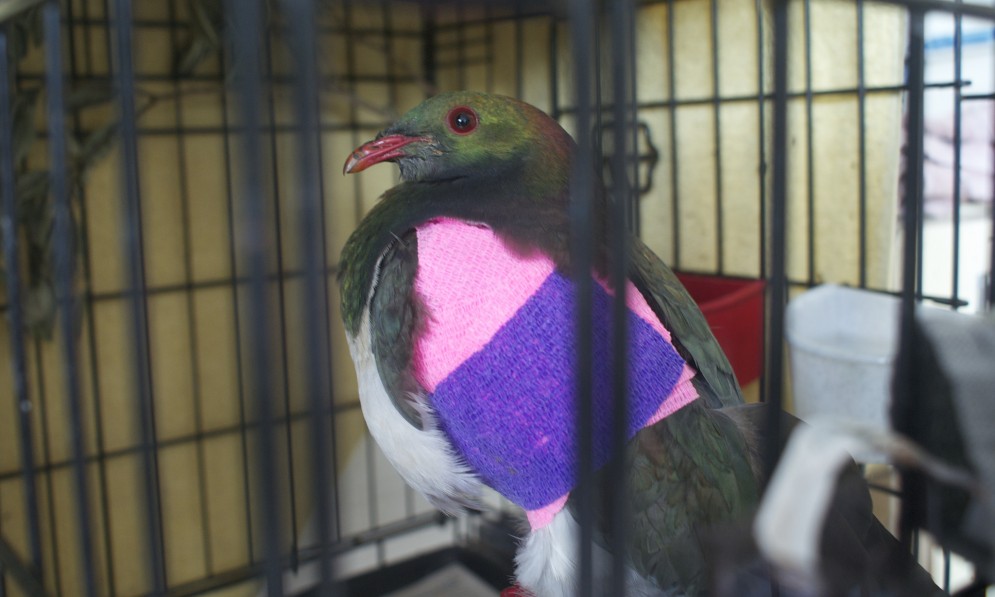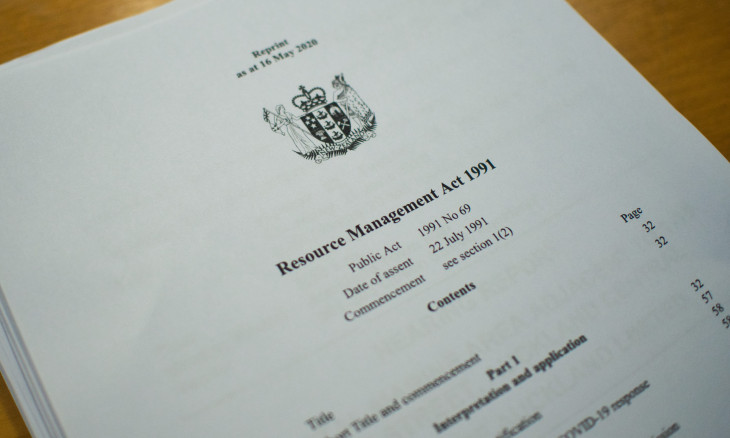Project Kererū is a voluntary community-based conservation project that is changing the fate of sick and injured kererū in Dunedin and surrounding areas. It is supported by Forest & Bird's Dunedin Branch (through the Marjorie Barclay Trust), DOC and Watties.
Unlike many other birds, kereru have a crop that stores their food prior to digestion. One of the most common injuries to kereru is when their crop bursts when they fly into windows.
View our video blog on kereru
Kererū are New Zealand’s only surviving native pigeon. They are long-lived birds that breed very slowly. They are currently fighting for survival.
Kererū are important. Since the extinction of the Moa, they are now the only birds left that are capable of swallowing fruit greater than 12 mm in diameter and dispersing the seed again whole. This means that the future of our native trees is closely linked to the survival of our kererū.
Recent studies have shown that despite the fact that kererū can live between 15 and 20 years, in some parts of the country, at present the average lifespan is between 1½ and 5½ years. The biggest threats to kererū are impact injuries with windows and cars, closely followed by habitat loss, predation and illegal hunting.
What can you do to help?
The biggest thing you can do is learn to appreciate what we have before it’s gone!
Plant trees in your garden to encourage kererū to visit. Kererū have adapted their diet over the years to eat plants that are both native and exotic.
Examples of these include wineberry, Coprosma, cabbage tree, broadleaf, pigeonwood, southern rata, puriri, miro, matai, kōwhai, wattle, Scottish broom, tree lucerne, holly, Laburnum, Virgillia, silver poplar, flowering cherry/plum, pear, pillow and rowan.
Kererū pigeon
Over 50% of the birds we care for each year have suffered an impact of injury of some description. The most common of which is impact with a window, closely followed by impact with a car.
Hang objects in your windows to help prevent window strike. Kereru that impact with a window leave a distinctive dust pattern on the glass. Our rehabilitation aviaries are shipping containers that have been especially modified. They enable the birds to regain their mobility and wing strength while being closely monitored in a safe environment.
Our approach to casualties
- Many factors need to be considered, of which the most important are:
- Is the animal so unwell or so badly injured that is unlikely to survive and is probably in severe pain?
- Even if the animal is likely to survive, will it be possible to return it back to the wild when recovered?
This is our first and foremost thought. We will not initiate treatment and care if it is not in the animals’ best interests. Sometimes euthanasia is the kindest option.
What should you do if you find an injured kereru?
Using a towel or blanket, carefully place it into a cardboard box and leave it somewhere warm, dark and quiet - a hot water cupboard is ideal.
Call the Department of Conservation for further advice.
Dunedin Conservancy (03) 477 0 677 or 0800 362 468











